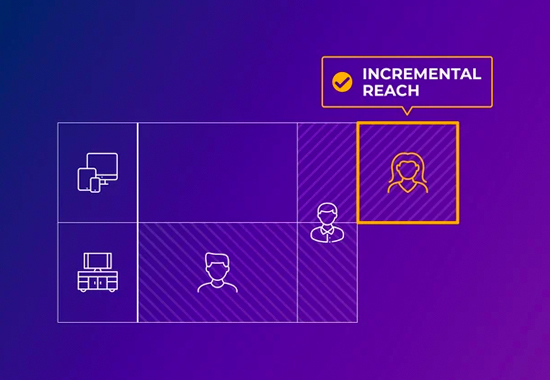FreeWheel Unpacks Some Not-So-Basic Reach Terminology

Incremental Reach. Deduplicated Reach. Household Modeling. Automatic Content Recognition (ACR). These terms are tossed around every day as marketers and media representatives determine the optimal ways to reach audiences in a fragmented television marketplace. According to Tess O'Brien, Vice President and Head of Demand Revenue at FreeWheel, "It's very easy to get caught up in all the complexities of the different data sources and how things are defined." That's why she favors a "back-to-basics approach" to understand what all this means so an advertiser can best reach their target audience.
Incremental reach may not sound very basic but understanding exactly what that means is critical. By definition, "incremental" denotes an increase or addition that happens gradually. Incremental reach refers to "audiences not yet exposed to a brand's digital and TV advertisements outside of the linear TV ecosystem," according to FreeWheel's Delivering Incremental Reach: A Guide to Reaching New Audiences.
The term incremental reach is sometimes used interchangeably with deduplicated reach, even though they are different. "Deduplicated reach is about counting the households, and incremental reach is more about the reporting and the analysis that goes into determining what the reach is across a specific campaign," O'Brien explained. A linear buyer is more apt to use the term incremental reach whereas someone from the digital side of the industry may prefer deduplicated reach.
Invite job candidates to apply live during the Media and Advertising Community’s Black Talent Outreach Week at MediaVillage.com and AdvancingDiversity.org October 17-20. Apply for jobs/submit your resume here.
Think of incremental reach as advertising's version of the real estate maxim: "location, location, location," O'Brien said. "You can compare media planning to a property hunt. When you're trying to find a house, the most important aspect in that process is always where you want to be. So incremental reach is really about broadening a campaign's reach and finding new audiences in these newly emerging television environments like CTV [connected TV].”
There is no industry standard to measure how incremental reach is calculated, and that can be confusing, she noted. But there are two common methods for doing so: ACR and household modeling.
ACR involves "measuring on the glass" -- in other words, the glass on video screens. That form of measurement happens in real time, so the TV must be on. O'Brien said this model, while a good data source, has its limitations, because it doesn't offer a full picture.
Household modeling provides that because it uses set-top-box, broadband-only, and other third-party data sources. It allows measurement to go beyond what is being watched and predicts what households are likely to watch or not to watch. This is the methodology that is used at FreeWheel. O'Brien believes this offers greater scale and more accurate modeling.
"Set-top-box data provides a much more complete view of households linear exposures, and it does not rely on any kind of content and time comparison we see ACR technology using," she explained. One of the unique aspects of a platform like FreeWheel is its ability to use additional aggregated viewership data from cable subscribers served by its parent company, Comcast.
As confusing as all this can get, one thing remains clear: The television viewer does not distinguish between linear and CTV. For them the line is not blurry. In fact, it does not exist. Consumers make their viewing choices based on programming. But when does the buying and selling community catch up to that reality?
O'Brien believes this is a journey and we are not there yet, but she does think the industry is at what she calls the "beginning of a more holistic planning process" -- one that starts with combining linear and CTV campaigns together and using programmatic platforms to build out incremental reach.
The ultimate goal is basic: allowing advertisers to make smarter, more data-driven decisions to reach audiences effectively, wherever they are. The way to best do that continues to evolve.
DownloadFreeWheel's latest guide to learn more about incremental reach.
Click the social buttons to share this content with your friends and colleagues.
The opinions and points of view expressed in this content are exclusively the views of the author and/or subject(s) and do not necessarily represent the views of MediaVillage.com/MyersBizNet, Inc. management or associated writers.


